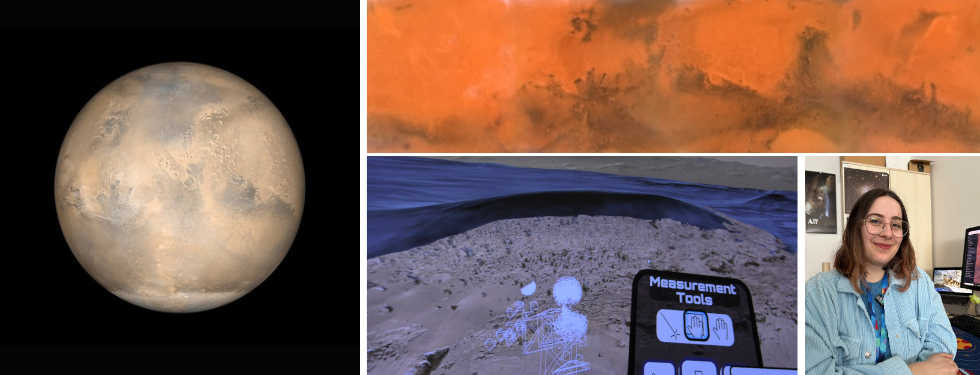Climate history recorded in Martian sediments

A new study led by Beatrice Baschetti, PhD candidate at the Department of Geosciences of the University of Padua and researcher at the Italian National Institute for Astrophysics (INAF), sheds light on the past climatic evolution of Mars, dating back to the period roughly between 4 and 3 billion years ago. The research, published in JGR: Planets, focuses on three craters in the equatorial region of Meridiani Planum, where layered deposits rich in hydrous minerals are found.
A climatic story told by layers
The observed sediments reveal a cyclic sequence of light and dark layers, respectively composed of clays and sulfates. These minerals typically form under very different environmental conditions: sulfates are commonly associated with more acidic and dry settings, while clays are found within wetter and more neutral ones. The analysis was conducted using spectroscopic data from NASA’s MRO spacecraft, specifically the CRISM instrument, combined with high-resolution digital terrain models derived from HiRISE imagery.
Ancient lakes on Mars
The data suggest that the craters once hosted lacustrine environments, fed by groundwater and subject to periodic changes in water level. The sediments were deposited in response to these fluctuations, recording in detail a complex and non-linear sequence of climatic events, and preserving an equally complex mineralogical signature detectable only through high-resolution targeted analyses.
A glimpse into the climate transition
This alternation of layers offers a window into the transition between two key periods of Martian history: the Noachian, generally warmer and water-rich, and the Hesperian, a colder and more arid epoch. Results from this study not only improve our understanding of the formation of equatorial layered deposits, but also provide valuable insights into Mars' potentially habitable environments and their evolution.
PRESS INFORMATION
DOI: https://doi.org/10.1029/2024JE008564





